Introduction
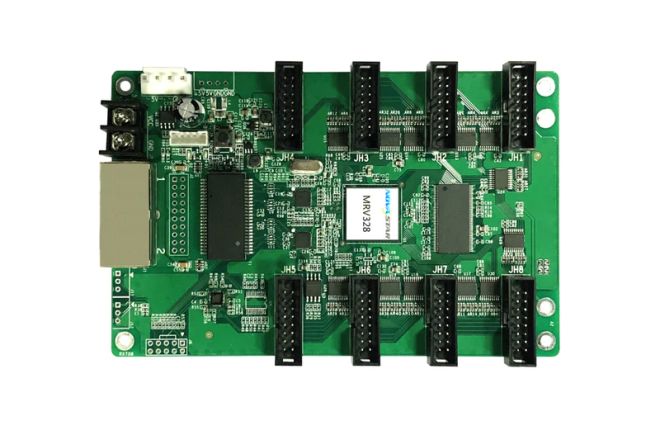
With the gradual development of LED displays, you can see them in more and more places. For example: stadium, roadside, bus station, etc.
As one of the core components of the LED display screen, the LED receiving card plays a vital role in it. This article will take you through all the knowledge about LED display receiving cards. Let’s take a look together.
1. What is an LED receiving card?
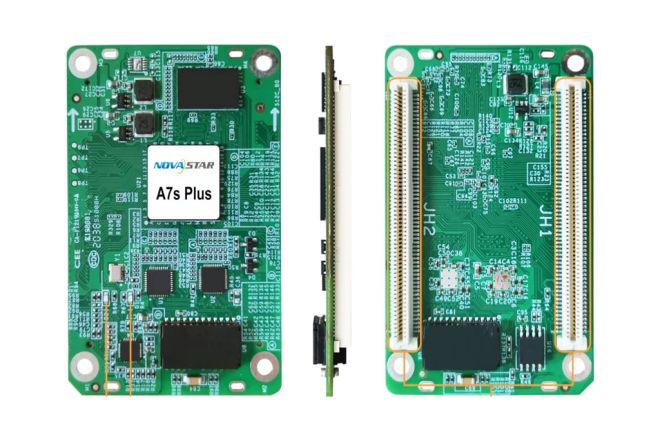
The receiving card of the LED display, also known as the LED receiving card or receiving board, is an important part of the LED display control system.
The main function of the receiving card is to receive image data from the sending card and convert this data into signals that the LED screen can recognize according to specific protocols and formats, thereby driving the LED screen to display the corresponding image.
Simply put, it is like a translator, helping computers or other devices to convert the information they want to display into a language that the LED screen can understand.
The receiving card consists of several components, including:
Microcontroller (MCU)
memory
Interface chip
…
Among them, the MCU is responsible for data processing and control of the entire system, the memory is used to store the LED display content and control parameters, and the interface chip is responsible for data transmission and communication tasks with the control card.
In addition to basic data reception and conversion functions, modern LED display receiving cards also have many other functions, such as grayscale control, color correction, brightness control, etc.
These functions enable the receiving card to achieve a variety of LED display effects, such as clear, smooth, bright, etc. At the same time, the receiving card can also achieve remote control through network communication, wireless transmission, etc., which improves the flexibility and convenience of the LED display.
2. Working principle of LED receiving card
The working principle of the LED display receiving card can be briefly summarized as the following steps:
Data reception: The LED display receiving card receives image data from the sending card (control card) through the network interface or other communication methods. This data is usually transmitted in specific protocols and formats.
Data analysis: After receiving the data, the receiving card will analyze and process it. This process includes splitting, identifying, and controlling data packets to extract image data and related control parameters.
Data conversion: The parsed image data needs to be format converted to adapt to the display requirements of the LED display. The receiving card will convert the image data into pixel data that the LED screen can recognize based on the resolution, color depth, and other parameters of the LED screen.
Grayscale control and color correction: The receiving card will also perform grayscale control and color correction on the pixel data to ensure the clarity and color accuracy of the image display. This includes adjusting the brightness and color of each pixel for a high-quality display.
Data sending: The processed pixel data is sent to the lamp beads on the LED display through the output interface of the receiving card. This process usually involves steps such as differential signal conversion and constant current driving to ensure the stability and security of signal transmission.
Synchronous display: The receiving card will be synchronized with the sending card to ensure that the pixel data of the entire LED display can be updated and displayed simultaneously. In this way, viewers can see clear and smooth images.
In general, the LED display receiving card is like the brain of the LED display, responsible for receiving and processing information so that the LED display can display the content you want to see normally and clearly.
3. Technical characteristics of LED receiving card
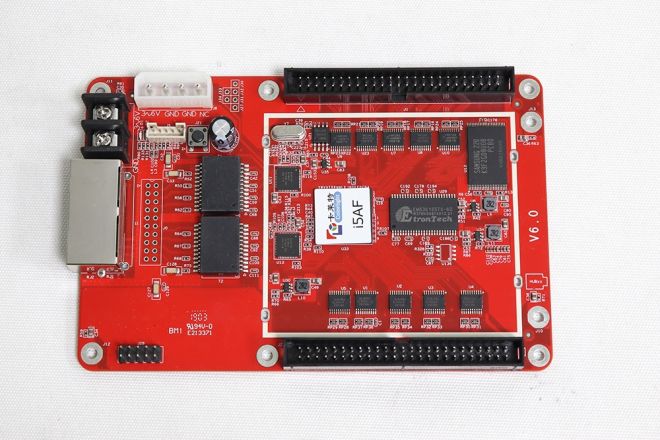
The technical characteristics of the LED display receiving card are mainly reflected in the following aspects:
- Real-time:
The receiving card can receive and process data from the sending card in real-time, ensuring that the LED display screen can display dynamic images and text information in real-time.
Just like you are watching live TV, the receiving card can receive the data in real-time and display it on the LED display immediately. It’s like a “live translator” that instantly translates data into a language the display can understand.
- Rich expressiveness:
The receiving card supports image display with high resolution and high color depth, which can present delicate and vivid picture effects. It’s like an advanced color printer that can print very detailed and colorful pictures.
- Complex operation:
Although the working principle of the receiving card is relatively simple, in actual applications, it needs to be configured and debugged according to the specific LED display model, size, and control requirements, and the operation is relatively complicated. Just like adjusting the parameters of an advanced camera, you need to know some professional terms and operating techniques.
- Higher price:
Since the receiving card requires a high-performance processor, large-capacity memory, and a stable communication interface, its manufacturing cost is relatively high, resulting in a higher market price.
- High-reliability requirements:
The receiving card is one of the core components of the LED display control system, and its stability and reliability are crucial to the operation of the entire system. The receiving card needs to work stably all the time, just like the TV at your home. You can’t hope that it will often have problems or the display will not be clear. Therefore, the receiving card needs to have excellent heat dissipation performance, anti-interference ability, and fault self-recovery function.
- Good flexibility:
Modern receiving cards usually support a variety of communication protocols and control methods, such as serial ports, network ports, wireless transmission, etc., just like a multi-functional computer, which can connect to different devices and software. In this way, it can adapt to a variety of different application scenarios and needs.
4. How do we install the receiving card of the LED display screen?
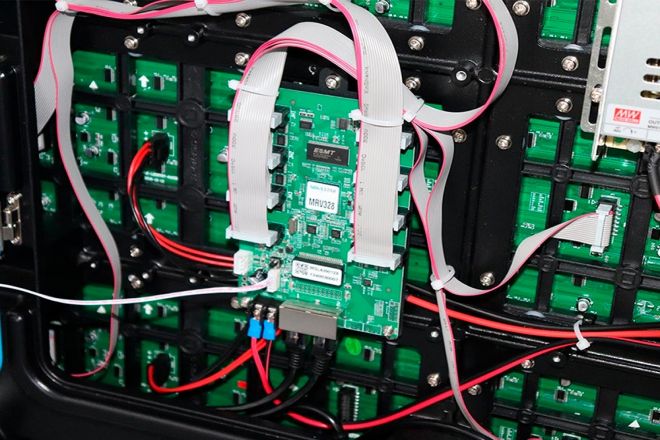
1). Installation steps:
Preparation: Make sure all required hardware and tools are available, including receiving cards, screwdrivers, cables, etc.
Determine the location: Choose a suitable location within the frame of the LED display to install the receiving card. Typically, the receiving card will be installed inside the frame on or below the display to facilitate connection and wiring.
Fix the receiving card: Use screws or other fixings to fix the receiving card in the selected position to ensure that it is stable and not easy to loosen.
Connect the power supply: Connect the power cord of the receiving card to a suitable power socket or switch the power supply to ensure a stable power supply.
Connect the data cable: According to the requirements of the display screen and control system, use appropriate data cables (such as network cables) to connect the receiving card and the sending card (control card).
Check connections: After you have made all connections, carefully check that all cables and connections are tight and secure and that nothing is loose or damaged.
Test: Before applying power, make sure all connections are correct, and then turn on the power to test. Observe whether the display screen can receive and display data normally.
2). Installation location:
The installation location of the receiving card is usually chosen inside the frame of the LED display. The specific location depends on the model, size, and control system requirements of the display. Generally speaking, the receiving card will be installed inside the frame on the right side of or below the display to facilitate wiring and connections.
During installation, it is necessary to ensure that the position of the receiving card is stable, fixed, and convenient for subsequent maintenance and upgrades.
It should be noted that if you install the receiving card by yourself, you should carefully read the product manual or installation guide before installing the receiving card to ensure that the correct steps and locations are followed.
5. How do you choose the receiving card for the LED display?
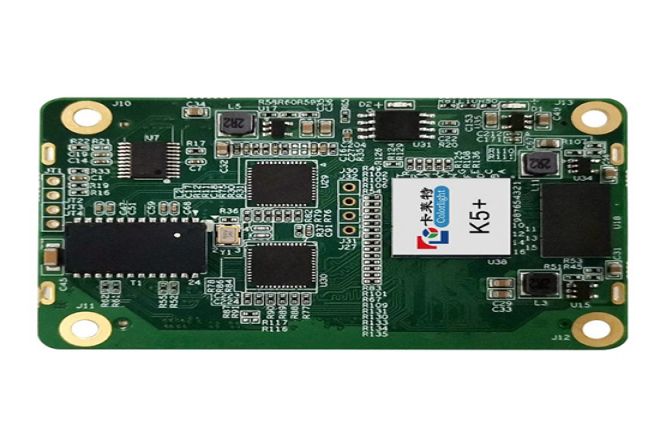
When choosing a receiving card for an LED display, you need to consider the following key factors:
- Compatibility:
Make sure the receiving card is compatible with your LED display model, size, and control system. Different LED displays may require different types of receiving cards, so make sure they are matched when choosing.
- Performance requirements:
Based on your application needs, choose a receiving card with sufficient processing power and stability. Consider factors such as real-time performance, data processing capabilities, grayscale control accuracy, and color correction capabilities of the receiving card to ensure that the display can present high-quality images and text.
- Interface and communication method:
According to the requirements of the control system, select a receiving card with the appropriate interface and communication method. For example, if your control system uses network communication, then you need to choose a receiving card that supports network interfaces.
- Scalability and upgradeability:
Consider the scalability and upgradeability of the receiving card so that it can continue to be used when the LED display is upgraded or expanded in the future. Choose those receiving cards that support more LEDs, higher resolutions, or more features to meet future needs.
- Price and cost-effectiveness:
When choosing a receiving card, consider the balance between price and performance. Don’t just pursue low prices and ignore the quality and performance of the receiving card. Choose receiving cards that have a good price/performance ratio that can meet your needs without putting too much pressure on your budget.
- Brand and quality:
Choose a well-known brand and a receiving card manufacturer with a good reputation to ensure the quality and after-sales service of the receiving card. Learn about manufacturers’ reputations, product quality control, and customer reviews to help you make an informed choice.
- Technical support and after-sales service:
Choose those receiving card manufacturers that provide technical support and after-sales service. In this way, when you encounter problems or need technical support during use, you can get help and solutions in time.
If you really don’t know how to choose, you can consult the LED display salesperson and let him recommend the one that suits you.
Conclusion
In general, the LED display receiving card is one of the keys to achieving high-quality LED display effects. Its principles and usage methods have important reference value for both users and manufacturers.
If you want to know more professional knowledge about LED displays, please get in touch with us!
